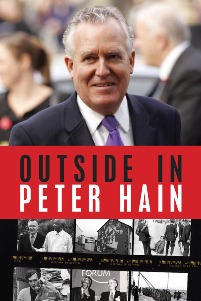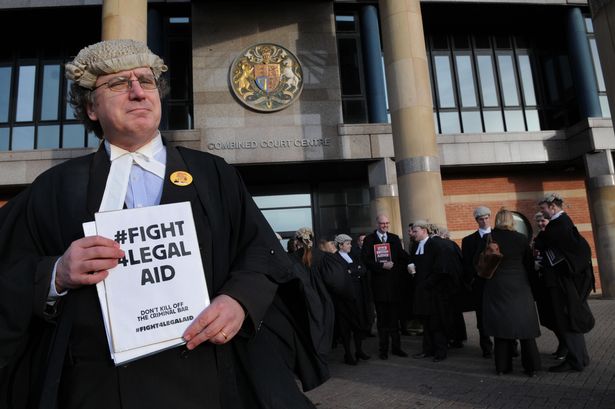– Lewis Bedford (LLB Law, Newcastle University) l.bedford@newcastle.ac.uk
The highly anticipated private members Bill, purporting to overhaul the law underpinning domestic abuse, is set for second reading early June this year. The Bill intends to create a separate offence running in parallel to the current Offences Against the Persons Act 1861.
Elfyn Llwyd, sponsoring the Bill, hopes the proposals will bring domestic abuse laws up-to-date by codifying the cross-government definition of domestic abuse adopted last year; a definition that the current law does not fully accommodate. If successful, the Bill will criminalize all elements of domestic abuse including what has been coined coercive control (ibid):
[A]n act or a pattern of acts of assault, threats, humiliation and intimidation or other abuse that is used to harm, punish, or frighten their victim
If the Bill is passed, perpetrators will find themselves facing a custodial sentence of up to fourteen years. Moreover, under the judiciary’s discretion, there is a possibility that the accused must attend a domestic violence rehabilitation program whilst in prison.
A number of measures are also being proposed in retaliation to the perceived justice gap and attrition problem inherent in many domestic offences. Concerns have been raised as to why cases often fall through in the prior stages to prosecution.
WomensAid underline how victims, predominantly women, may feel pressured into dropping charges post-incident in order to maintain a family’s reputation. Additionally, particularly among Minority Ethnic communities, women often feel ostracized within their local areas due to ‘allegations of disloyalty or collusion’. Only making matters worse, the long costly nature of the court process leaves victims at risk of suffering further domestic abuse whilst waiting for cases to be heard. Arguably, because of these hurdles, victims are less inclined to report domestic abuse. Statistically, only 20% of rapes or sexual assaults are reported to the Police. Less serious cases of domestic abuse also share similar statistics.
Llwyd, hoping to address these issues, stated how the Bill intends to tighten up the investigatory process, create duties upon the police force in respect of domestic abuse call-outs, and provide statutory training in relation to such cases. However, with the Bill being what Llwyd calls a ‘working draft’, what these provisions specifically entail is yet to be specified.
Jamie Doward believes the Bill will be similar to its US counterpart, the Violence Against Women Act (VAWA). By strengthening penalties for re-offenders, creating dedicated hotlines, and ensuring police responses, the Act hoped to tackle similar issues that are faced in England and Wales today. In light of the Bureau of Justice’s statistics, the Act was, in the most part, successful. After the Act’s inauguration, intimate partner violence decreased by 64% – a statistic VAWA advocates have been keen to underline.
It’s supposed success was accredited to a combination of factors. Most notably, however, the Act has sectioned funds for training in how to cope with domestic abuse call-outs for over half a million law enforcing personnel every year. With Llwyd pointing towards training himself, it seems England and Wales may make similar provisions.
Lanette Ruff concluded in 2012, that training does matter. Ruff explored the responses of police officers with regards to domestic abuse call-outs in Fredericton, Canada. By drawing upon statistics compiled both before and after training, Ruff concluded that officers were more likely to report crimes once training had been completed. As somewhat of a corollary, guilty verdicts also marginally increased. Ruff found particularly promising how ‘ongoing training allows police officers to reflect on the importance of treating each domestic dispute call like it is their only opportunity to provide intervention’. Indeed, there has been a pressing concern that some forces in the UK are harboring a ‘culture of disbelief’ with regards to the more serious domestic offences. Active participation in training would go some way to correct this injustice (ibid):
[T]raining provides… an opportunity to reflect on their own biases and stereotypes… and how their views can have an unintended impact on their response to accused and victims
On the other hand, Ruff’s analysis also found that post-training, a majority of officers responded in a similar fashion to how they always had. Police still seemed reluctant to contact a temporary shelter or mention third party help centers.
Furthermore, Kate Pickert suggests that the fall in domestic violence in the US is more likely attributable to the general nationwide drop in domestic abuse, irrespective of the Act being implemented. Pickert believes that rather than shortening the justice gap, the VAWA spurred a counterproductive culture change in law enforcement. She believes particular training has the capacity to foster a culture whereby police are more willing to arrest on arrival. As such, women may be discouraged from reporting domestic violence in fear their partners will be arbitrarily detained in custody. Indeed, it is generally held among commentators that victims of domestic abuse are often dependent, particularly financially, on their abusive partners. If such is the case, foresight of an arrest surely works as a disincentive rather than encouraging women to speak up.
The Bill’s proposed obligations on officers might also prove ineffective. Llwyd, in his ten-minute motion, made little reference to what obligations police forces in England and Wales would be subject to. Catherine Baksi interprets Llwyd as proposing a duty to investigate.
Under such a scenario, officers will most probably be obliged to investigate if they hold a reasonable suspicion that the supposed offence had occurred. In most cases, the accused will unreservedly deny any accusations, leaving any reasonable suspicion grounded solely on the victim’s testimony. Officers will find themselves faced with little option but to side with one or the other; accused or accuser. The bottom line is, those making callouts will be caught in an uncomfortable and cost-ineffective situation. Furthermore, having to deal with a barrage of similar in-conclusive scenarios, officers may become desensitized towards those less serious, non-evidential abuses within the home that the Bill aspired to address. Indeed, this may work as a catalyst for the ‘culture of disbelief’ [quote other article here] some commentators are keen to underline.
Clearly, the proposals may prove ineffective in tackling the issues faced by the law related to domestic abuse. Some have questioned whether reformulating the law is even necessary with the Offences Against the Person Act and subsequent case law already providing adequate legislative underpinning. Instead, focus should be placed more readily upon cutting domestic abuse before it happens, rather than finding justice for victims. Personally, however, I believe reforms should be welcomed with open arms.
Providing a separate offence will not only clarify what domestic abuse entails, but also provide a platform whereby change, both legal and social, can be obtained. The criminal law undoubtedly holds an overwhelming ideological and discursive power among those subject to it. By coherently setting out the offence, Parliament sends a strong moral message about intimate partner abuse. In effect, the law can be used as a tool to further the changing attitudes and ideals in relation to domestic abuse. Indeed this is increasingly important for those offences that don’t ‘leave scars or bruises, but [are] every bit as debilitating’. Such offences are relatively new within the sphere of what constitutes domestic abuse; society must be reminded that coercive control should not, and will not, be tolerated. Nevertheless, it must be borne in mind that change can go two ways. Hopefully, those drafting the particular Bill are appreciative of how particular proposals can prove counterproductive, not just for victims but society as a whole.




